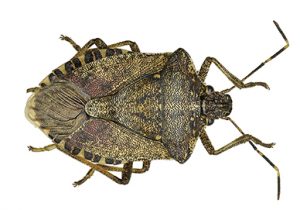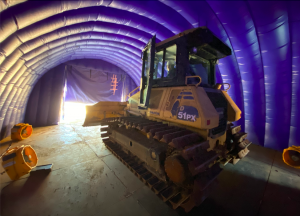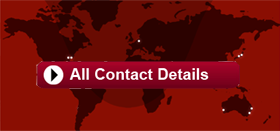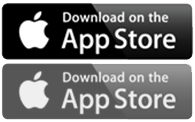International Freight for Heavy Industry
Seasonal measures for Brown Marmorated Stink Bug (BMSB) 2021-22
Seasonal measures for Brown Marmorated Stink Bug (BMSB) 2021-22

For the 2021-22 BMSB risk season, BMSB seasonal measures will apply to targeted goods manufactured and shipped from target risk countries, that have been shipped between 1 September 2021 and 30 April 2022 (inclusive), and to vessels that berth, load, or tranship from target risk countries within the same period.
Note: The shipped on board date, as indicated on the Ocean Bill of lading, is the date used to determine when goods have been shipped. “Gate in” dates and times will not be accepted to determine when goods are shipped.
The DAWE continuously review the measures throughout the season and may make necessary adjustments based on detections of BMSB and changes in the risk pathways.
Target high risk and target risk goods manufactured in or shipped from the target risk countries as sea cargo between 1 September 2021 and 30 April 2022 (inclusive) as reflected on the Bill of Lading are subject to BMSB intervention.
All other goods are not subject to BMSB intervention unless they are packed in a container with target high risk or target risk goods that require BMSB intervention, then all other goods are subject to the measures.
Target high risk goods subject to mandatory offshore treatment that arrive untreated or treated by an unapproved treatment provider in a target risk country, will be directed for export on arrival.
Goods shipped in iso-tanks and as bulk-in-holds of cargo vessels are not subject to the measures.
As with previous BMSB risk seasons, it’s compulsory to comply with these measures. Throughout the season, these measures continue to be reviewed by the department based on detections of BMSB and the risk pathways and make any necessary adjustments.
Freightplus can provide DAWR biosecurity compliance on used machinery shipments to Australia, including BMSB risk management. Freightplus offers:
BIOSECURITY CLEANING FOR AUSTRALIA, GUARANTEED AGAINST RE-EXPORT
At:
- Savannah, USA
- Long Beach, USA
- Galveston, USA
- Vancouver, Canada
- Antwerp, Belgium
PRE-SHIPMENT BIOSECURITY INSPECTIONS, GUARANTEED AGAINST RE-EXPORT:
At:
- North America
- Savannah, USA
- Long Beach, USA
- Galveston, USA
- Vancouver, Canada
- Central America
- Manzanillo, Panama
- UK / Europe
- All ports, all locations
- Asia
- Japan
- Thailand
- Indonesia
- Australia (state quarantine compliance)
- Brisbane
- Port Kembla
- Melbourne
- Fremantle
- Mackay
BROWN MARMARATED STINK BUG (BMSB) TREATMENT
At:
- Austria
- Belgium
- Canada
- Germany
- Greece
- Italy
- Japan
- Malaysia
- The Netherlands
- Romania
- Singapore
- Slovenia
- Spain
- Sri Lanka
- Thailand
- Turkey
- United Arab Emirates
- United States of America
- Vietnam
For more information on our biosecurity services or on the upcoming BMSB season please contact your local Freightplus office.
BMSB Target Risk Countries
The following countries below have been categorised as target risk:
- Albania
- Andorra
- Armenia
- Austria
- Azerbaijan
- Belgium
- Bosnia and Herzegovina
- Bulgaria
- Canada
- Croatia
- Czechia
- France
- Japan (heightened vessel surveillance will be the only measure applied).
- Georgia
- Germany
- Greece
- Hungary
- Italy
- Kazakhstan
- Kosovo
- Liechtenstein
- Luxembourg
- Montenegro
- Moldova
- Netherlands
- Poland
- Portugal
- Republic of North Macedonia
- Romania
- Russia
- Serbia
- Slovakia
- Slovenia
- Spain
- Switzerland
- Turkey
- Ukraine
- United States of America
Any target high risk or target risk goods which are manufactured in or shipped from the target risk countries will be subject to the BMSB seasonal measures. Any vessel that berths at, loads, or tranships from the target risk countries is also subject to the BMSB seasonal measures.
In addition, the department continues to review the changing risk status of BMSB and will also be undertaking random onshore inspections on goods from other emerging risk countries to verify pest absence in goods.
The following countries have been identified as emerging risk countries for the 2021-22 BMSB risk season and may be selected for a random onshore inspection: Belarus, Malta, Sweden, United Kingdom, and Chile.
BMSB Measures relating to goods
Treatment of target high risk goods
- Target high risk goods treated in target risk countries must be treated by a registered offshore treatment provider approved under the Offshore BMSB Treatment Providers Scheme.
- Treatments conducted by an unapproved treatment provider in a target risk country will not be recognised as valid and the goods will be subject to onshore treatment (if permitted) or be directed for export.
- Treatment providers in other countries who intend to conduct BMSB treatments for goods that are manufactured in any of the target risk counties are also encouraged to register under the offshore treatment provider’s scheme.
- Treatment certificates from providers in non-target risk countries who do not register will be accepted, however these goods will be subject to increased intervention on arrival compared to those treated by approved treatment providers.
Break bulk goods
- Mandatory offshore treatment of target high risk goods shipped as break bulk cargo will be required. Onshore treatment is not permitted.
- Goods shipped in open top containers (including in gauge) or on flat rack containers are also considered to be break bulk.
- Untreated break bulk will be directed for export. Where these goods are identified prior to a vessels arrival into Australia, they will be denied discharge from that vessel.
- Automated Entry Processing for Commodity (AEPCOMM) arrangements for BMSB is permitted for break bulk goods. See relevant BICON commodities for assessment and outcomes.
- FCL containers that have been modified, such as those used to house in-built power generators, etc. are no longer sealed six hard sided containers and are considered to be break bulk cargo.
Containerised goods (FCL, FCX)
- Containerised cargo arriving in sealed six hard sided containers with target high risk goods can be treated offshore, or onshore at the container level.
- The department classifies refrigerated containers (operating and non-operating) and hard top sealed containers (ISO22U6/ISO22UP, ISO42U6/ISO42UP and ISO45U6/ISO45UP) the same as six hard sided sealed containers.
- FCL containers that have been modified, such as those used to house in-built power generators, etc. are no longer sealed six hard sided containers and are considered to be break bulk cargo as per above.
- Goods are to be treated within the container. Deconsolidation or removal of goods will not be permitted prior to treatment. No exemptions for deconsolidation or segregation on arrival will be considered by the department.
- Consideration must be given to ensure containers are packed in a manner that will enable effective onshore treatment at the container level where required, to avoid possible export of the container.
- AEPCOMM arrangements for BMSB is permitted for containerised goods shipped as FCL (Full Container Load) and FCX (Full Container Consolidated). See relevant BICON commodities for assessment and outcomes.
- To demonstrate goods were sealed inside a container prior to 1 September 2021 or after treatment, a BMSB sealing declaration must be provided with the lodgement. This document is required where:
- Goods were containerised prior to 1 September 2021, but shipped after this date, or
- The bill of lading does not state the shipped-on board date, or
- Goods were sealed inside the container within 120 hours of treatment occurring offshore.
- Supporting documentation must be completed and signed by either the exporter, freight forwarder, or shipping company at the port of origin.
Note: Container tracking information may be used as supplementary means of confirming shipped on board date. It cannot be used as the primary form of evidence. Container tracking information is insufficient for demonstrating when goods were sealed in a container.
Containerised goods shipped as Less than Container Load (LCL) consignments and Freight of all Kinds (FAK) containers
LCL and FAK containers with target high risk goods will be managed at the container level for BMSB risk prior to deconsolidation. Once these have been managed, the consignments within these containers will be processed at the Full Import Declaration (FID) level for all other biosecurity intervention (if applicable).
See the Management of LCL/FAK containers web page for more details.
Air Cargo
Due to detections of live BMSB in previous season, air cargo arriving between 1 September and 30 November 2021 (inclusive) from USA and Italy, containing target high risk chapters 84, 85, 86 and 87 will be subject to random verification inspections.
Random onshore verification inspections
- All target high risk and target risk goods will be subject to random verification inspections and will be directed for onshore treatment if BMSB is detected.
- Where goods are shipped as break bulk, random inspections are required to be conducted at a Class 21.1AA. For goods shipped in flat rack and open top containers, these inspections will be able to be conducted at Class 1.1 and Class 1.3 AA.
- All random onshore verification inspections are required to be completed in a metropolitan location.
- The department will continue to review the changing pest status of BMSB and will be undertaking a lower rate of random onshore inspections on goods from emerging risk countries (watch list countries) to verify pest absence in goods.
- All goods must still meet the standard import conditions in the department’s biosecurity import conditions database (BICON) for all other biosecurity risks.
Known risk pathways and supply chains
- Goods from known risk pathways and supply chains that have had previous detections of BMSB may be subject to BMSB intervention including treatment and/or inspections.
- These risk pathways and supply chains will be reviewed throughout the season and adjusted to manage the risk of BMSB as required.
Treatment of BMSB goods in Australia and New Zealand
- The BMSB Seasonal measures are for goods being imported into Australian territory, and managing the risk associated for all goods that come into Australian territory.
- In conjunction with New Zealand MPI, New Zealand and Australia will not be conducting BMSB treatments for each other.
- Goods bound for Australia cannot be treated for BMSB in New Zealand and vice versa. For example, if the goods have been exported from New Zealand for not meeting BMSB import conditions, they will not be permitted to be treated in Australia, and vice versa.
BMSB Measures for Vessels
All roll-on roll-off (ro-ro) vessels will be subject to heightened vessel surveillance.
All ro-ro vessels that berth at, load, or tranship in target risk countries between 1 September 2021 and 30 April 2022 (inclusive) will be required to:
- Conduct self-inspections and respond to specific questions as part of the pre-arrival reporting requirements, and;
- Undergo a mandatory seasonal pest inspection on arrival in Australia.
Vessel Seasonal Pest Scheme
The Vessel Seasonal Pest Scheme (VSPS) is an alternative vessel clearance pathway for ro-ro vessels.
- Only ro-ro vessels that are eligible for the ‘Vessel Seasonal Pest Scheme’ and have detected no insects on board will be exempted from the mandatory seasonal pest inspection.
- The department will continue to perform inspections on vessels for other biosecurity reasons unrelated to BMSB. The nature of these inspections will vary based on the biosecurity risk being managed.
For further information on the VSPS and 2021-22 BMSB seasonal measures for vessels, visit the Management of vessels web page.
Goods Subject to the BMSB Measures
Goods that fall within the following tariff classifications have been categorised as target high risk goods and will require mandatory treatment for BMSB risk.
- 36 – Explosives; pyrotechnic products; matches; pyrophoric alloys; certain combustible preparations
- 44 – Wood and articles of wood; wood charcoal
- 45 – Cork and articles of cork
- 57 – Carpets and other textile floor coverings
- 68 – Articles of stone, plaster, cement, asbestos, mica or similar materials
- 69 – Ceramic products – including sub chapters I and II
- 70 – Glass and glass ware
- 72 – Iron and steel – including sub chapters I, II, III, IV
- 73 – Articles of iron or steel
- 74 – Copper and articles thereof
- 75 – Nickel and articles thereof
- 76 – Aluminium and articles thereof
- 78 – Lead and articles thereof
- 79 – Zinc and articles thereof
- 80 – Tin and articles thereof
- 81 – Other base metals; cermets; articles thereof
- 82 – Tools, implements, cutlery, spoons and forks, of base metal; parts thereof of base metal
- 83 – Miscellaneous articles of base metals
- 84 – Nuclear reactors, boilers, machinery and mechanical appliances; parts thereof
- 85 – Electrical machinery and equipment and parts thereof; sound recorders and reproducers, television image and sound recorders and reproducers, and parts and accessories of such articles
- 86 – Railway or tramway locomotives, rolling-stock and parts thereof; railway or tramway track fixtures and fittings and parts thereof; mechanical (including electro-mechanical) traffic signalling equipment of all kinds
- 87 – Vehicles other than railway or tramway rolling-stock, and parts and accessories thereof
- 88 – Aircraft, spacecraft, and parts thereof
- 89 – Ships, boats and floating structures
- 93 – Arms and ammunition; parts and accessories thereof
Target risk goods
Goods that fall within the following tariff classifications have been categorised as target risk goods and will not require mandatory treatment. Target risk goods will however be subject to increased onshore intervention through random inspection.
- 25 – Salt; sulphur; earths and stone; plastering materials, lime and cement
- 26 – Ores, slag and ash
- 27 – Mineral fuels, mineral oils and products of their distillation; bituminous substances; mineral waxes
- 28 – Inorganic chemicals; organic or inorganic compounds of precious metals, of rare-earth metals, of radioactive elements or of isotopes – including sub chapters I, II, III, IV and V
- 29 – Organic chemicals – including sub chapters I, II, III, IV, V, VI, VII, VIII, IX, X, XII and XIII
- 31 – Fertilisers
- 38 – Miscellaneous chemical products
- 39 – Plastics and articles thereof – – including sub chapters I and II
- 40 – Rubber and articles thereof
- 46 – Manufactures of straw, of esparto or of other plaiting materials, basket ware and wickerwork
- 47 – Pulp of wood or of other fibrous cellulosic material; recovered (waste and scrap) paper or paperboard
- 48 – Paper and paperboard; articles of paper pulp, of paper or of paperboard
- 49 – Printed books, newspapers, pictures and other products of the printing industry; manuscripts, typescripts and plans
- 56 – Wadding, felt and nonwovens; special yarns; twine, cordage, ropes and cables and articles thereof
For all other goods that are not categorised as target high risk and target risk goods, BMSB seasonal measures do not apply. However, these goods may be subject to the measures if they are part of a container or consignment that contains target high risk or target risk goods.
BMSB Treatment Options and Rates
There are three approved treatment options for BMSB treatment.
The approved treatments are:

Heat
For all goods types and sizes
- 56°C or higher at the coldest surface of the goods, for a minimum of 30 minutes
- or
- Alternative option for individual goods weighing less than 3000 kg shipped as break bulk only, 60°C or higher at the coldest surface of the goods, for a minimum of 10 minutes
Note: Individual goods shipped as break bulk weighing less than 3000kg treated at 60°C for 10 minutes require evidence within shipping documentation that they are less than 3000kg for these treatments to be accepted.
Methyl Bromide
- A dose of 24 g/m³ or above, at 10°C or above, for a minimum of 12 hours (but less than 24 hours), and a minimum end point reading of 12 g/m³
- or
- A dose of 24 g/m³ or above, at 10°C or above, for 24 hours or longer, and a minimum end point reading of 8 g/m³
*Note:
- All start time concentration readings must be above 24 g/m³.
- Dose increases to compensate for temperatures less than 10°C is NOT permitted.
- Topping up with additional fumigant at the end of treatment is NOT permitted.
- If the concentration of fumigant falls below the minimum end point reading at any point during the treatment, the treatment has failed.
Sulfuryl Fluoride
- A dose of 24 g/m³ or above, at 10°C or above, for a minimum of 12 hours (but less than 24 hours), and a minimum end point reading of 12 g/m³
- or
- A dose of 24 g/m³ or above, at 10°C or above, for 24 hours or longer, and a minimum end point reading of 8 g/m³
*Note:
- All start time concentration readings must be above 24 g/m³.
- Dose increases to compensate for temperatures less than 10°C is NOT permitted.
- Topping up with additional fumigant at the end of treatment is NOT permitted.
- If the concentration of fumigant falls below the minimum end point reading at any point during the treatment, the treatment has failed.
Sulfuryl Fluoride – Using third-party system*
- Achieve a CT of 200 g-h/m³ or more, at 10°c or above, for 12 hours or longer, with a minimum end point reading of 12 g/m³
- or
- Achieve a CT of 200 g-h/m³ or more, at 10°C or above, for 24 hours or longer, with a minimum end point reading of 8 g/m³
*Note: The approved stewardship program operators and their third party programs are:
- Douglas Products or their agents – FumiGuide
- Ensystex II, Inc. (USA) – Fumicalc
- Barcan Barcan Pest Control & Fumigation Co. (Barcan ilaclama Fumigasyon Tic. Ltd.Sti.) (Turkey) – FumiTrack
Topping up with additional fumigant at the end of treatment is NOT permitted. If the concentration of fumigant falls below the minimum end point reading at any point during the treatment, the treatment has failed.
Treatment minimum standards
There are set minimum standards for the application of BMSB treatments. Treatments applied for biosecurity purposes are part of managing the risk of introducing exotic pests and diseases.
It is important that treatment providers understand these requirements as treatments to manage risk are only effective when conducted correctly. These standards outline best practice methodologies for applying biosecurity treatments.
Onshore treatment
Where onshore treatment of goods is permitted, you can find a list of approved arrangement providers on the department’s website.
Offshore treatment
The Offshore Brown Marmorated Stink Bug (BMSB) Treatment Providers Scheme (the scheme) sets out the department’s registration and compliance requirements for BMSB treatment providers, including compliance with applicable treatment methodologies.
Treatment providers that were registered under the scheme during the 2020-21 season must complete a renewal application for the 2021-22 season. The offshore treatment provider application form is available on the department’s Offshore BMSB treatment providers scheme webpage.
Treatment providers in target risk countries
All BMSB treatment providers in target risk countries must first register and be approved under the scheme by the department prior to treatment. Treatments conducted by an unapproved treatment provider in a target risk country will not be recognised as valid and the goods will be subject to onshore treatment (if permitted) or be directed for export.
Treatment providers in non-target risk countries
Treatment providers in other countries who intend to conduct BMSB treatments for goods that are manufactured in any of the target risk counties are also encouraged to register under the offshore treatment provider’s scheme.
Treatment certificates from providers in non-target risk countries who do not register will be accepted, however these goods will be subject to increased intervention on arrival compared to those treated by approved treatment providers.
Treatment providers in non-target risk countries who perform multiple BMSB treatments during the season must join the Offshore BMSB Treatment Providers Scheme.
Fraudulent certificates
For treatments conducted in target risk countries, we will only accept BMSB treatment certificates from the approved list of treatment providers.
The department continues to improve its systems to monitor and detect the use of fraudulent certificates and will identify consignments that arrive in Australia with fraudulent documentation.
Any consignment identified with a fraudulent certificate or with a certificate from a treatment provider in a target risk country that is not approved will be directed for onshore treatment (if permitted) or exported.
Freightplus can help minimise the BMSB biosecurity risks on your cargo
For more information on our biosecurity services or on the upcoming BMSB season please contact your local Freightplus office.



